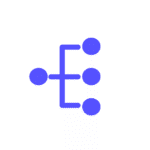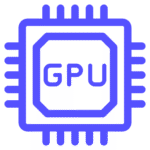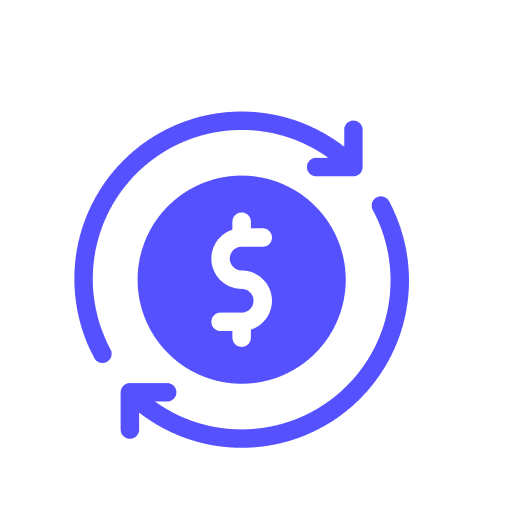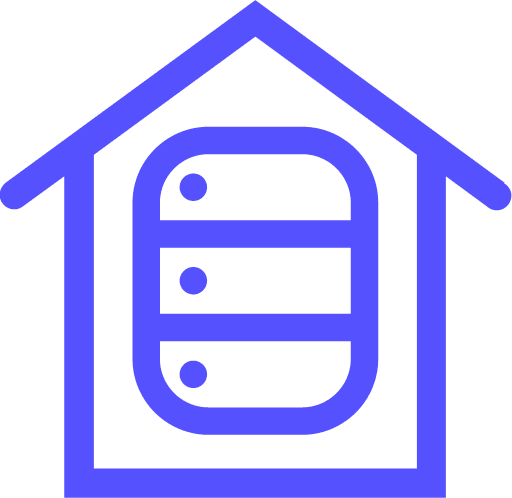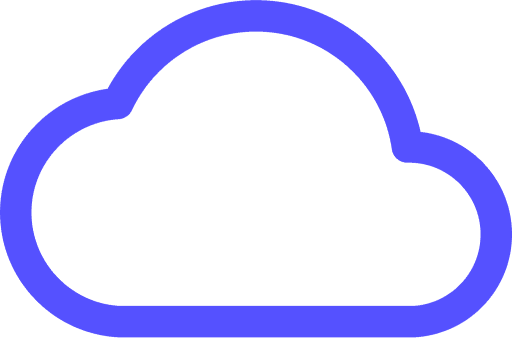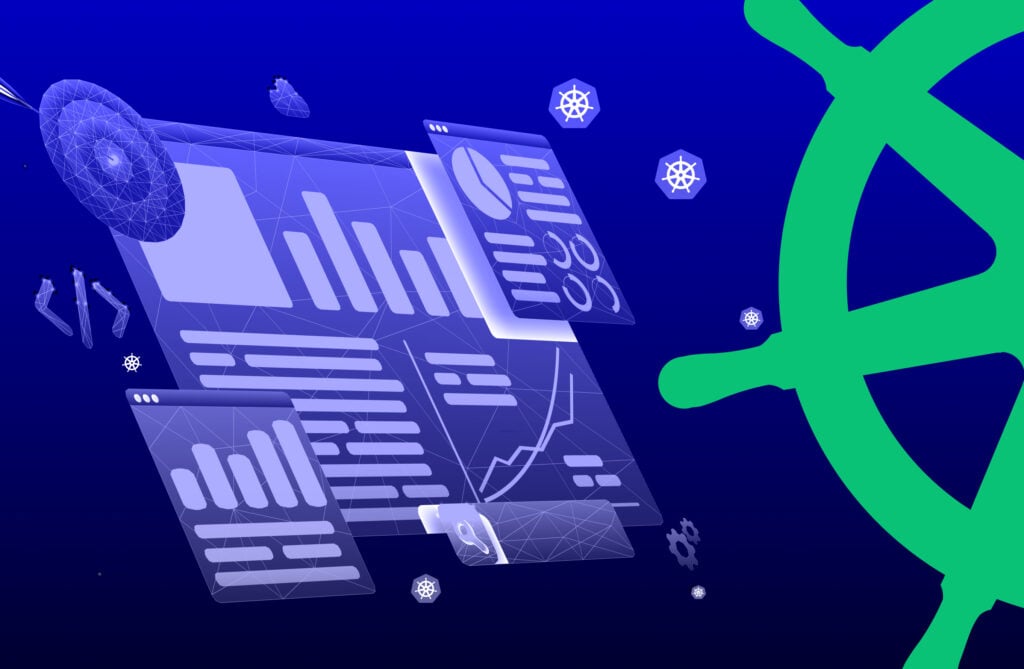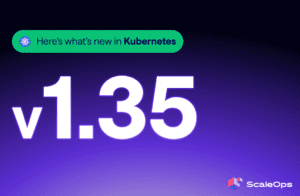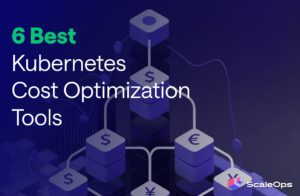Why Kubernetes Cost Optimization Matters
Kubernetes’ power comes from abstraction, but that same abstraction makes it easy to lose control over costs.
Without effective cost optimization solutions, DevOps and Platform teams often run into a few common (and expensive) issues:
- Resource Over-provisioning: Teams frequently request 2-3x more CPU and memory than applications actually use, leading to massive waste across production environments.
- Limited Cost Visibility: Cloud billing data isn’t designed for containers. Making it difficult to understand which workloads, teams, or environments are driving spend.
- Scaling Inefficiencies: Manual scaling decisions and poorly configured autoscalers overprovision resources, especially during off-peak hours.
- Orphaned Resources: Unused persistent volumes, idle load balancers, and forgotten development clusters accumulate costs over time.
The result? Organizations waste anywhere from 40-80% of their Kubernetes spend, and that’s almost always avoidable with proper resource management.
Kubernetes Cost Optimization Solutions in 2025
1. ScaleOps
Kubernetes cost optimization is core to what we do at ScaleOps, and we’ve built the platform specifically to solve the real challenges DevOps and Platform teams face in production.
ScaleOps provides real-time, application context-aware automation for managing pod-level resources. It continuously adjusts CPU and memory requests based on actual usage, removing the need for manual tuning and reducing cloud costs by while maximizing performance and reliability.
Key capabilities include:
- Automated Resource Optimization: Real-time, pod-level resource management
- Multi-cluster Support: Unified management across all your Kubernetes environments
- Application context-aware: ScaleOps manages cloud resources based on workload behavior and live cluster conditions
- Self-hosted Deployment: ScaleOps runs inside your infrastructure, with minimal footprint, including air-gapped setups
- Integration with Native Scaling: Enhanced HPA, KEDA, and Karpenter
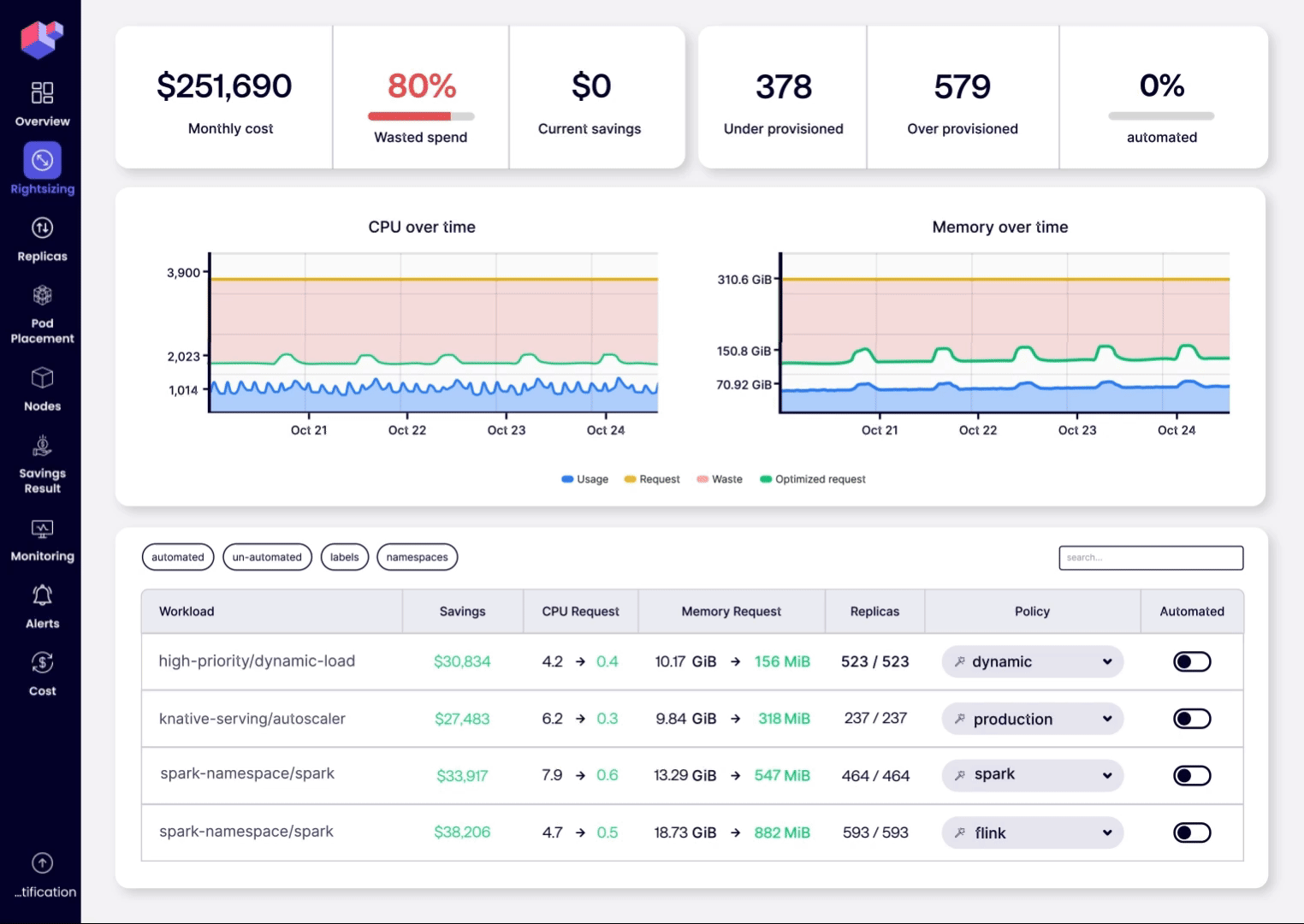
2. Kubecost
Kubecost offers comprehensive cost monitoring and optimization for Kubernetes clusters. The platform provides detailed visibility into cluster costs while offering recommendations for optimization.
Features include:
- Real-time Cost Monitoring: Track spending across clusters, namespaces, and applications
- Allocation Reports: Detailed cost breakdowns by team, project, or service
- Optimization Recommendations: Suggestions for rightsizing and resource efficiency
- Multi-cloud Support: Works across AWS, GCP, and Azure environments
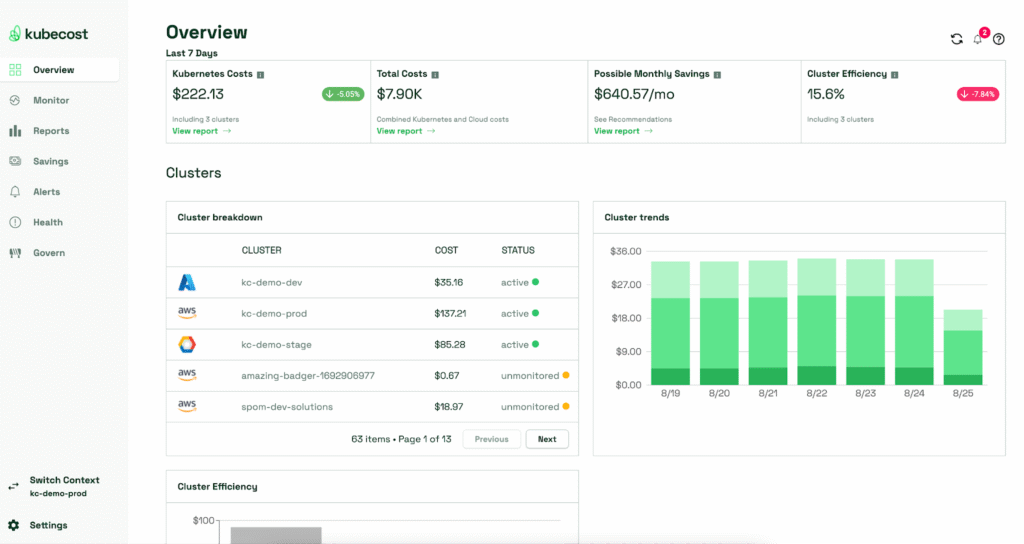
3. PerfectScale
PerfectScale is a commercial platform that focuses on autonomous optimization for Kubernetes workloads, using AI to continuously tune resource allocation without manual intervention.
Core offerings:
- Autonomous Optimization: AI-driven resource management
- Performance Monitoring: Track application performance alongside cost optimization
- Risk Assessment: Evaluate the impact of optimization changes before implementation
- Continuous Learning: Improves recommendations over time based on workload behavior
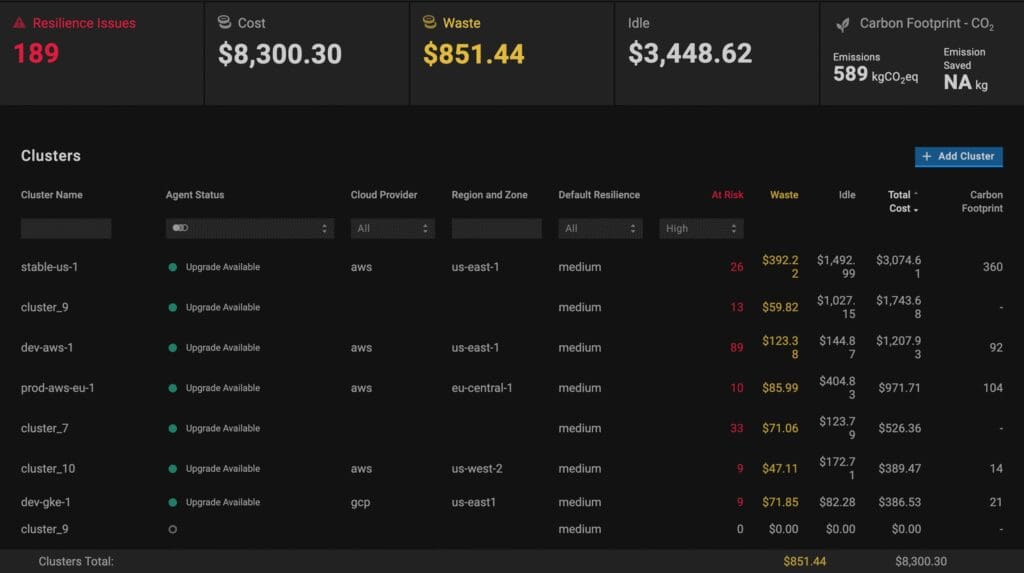
4. CloudZero
CloudZero is a commercial platform that provides cloud cost intelligence with specific capabilities for containerized environments. The platform offers detailed cost attribution and optimization recommendations.
Key features:
- Cost Attribution: Detailed breakdown of cloud spending by business unit
- Anomaly Detection: Identify unexpected cost increases
- Optimization Recommendations: Actionable suggestions for cost reduction
- Integration Capabilities: Works with existing cloud management tools
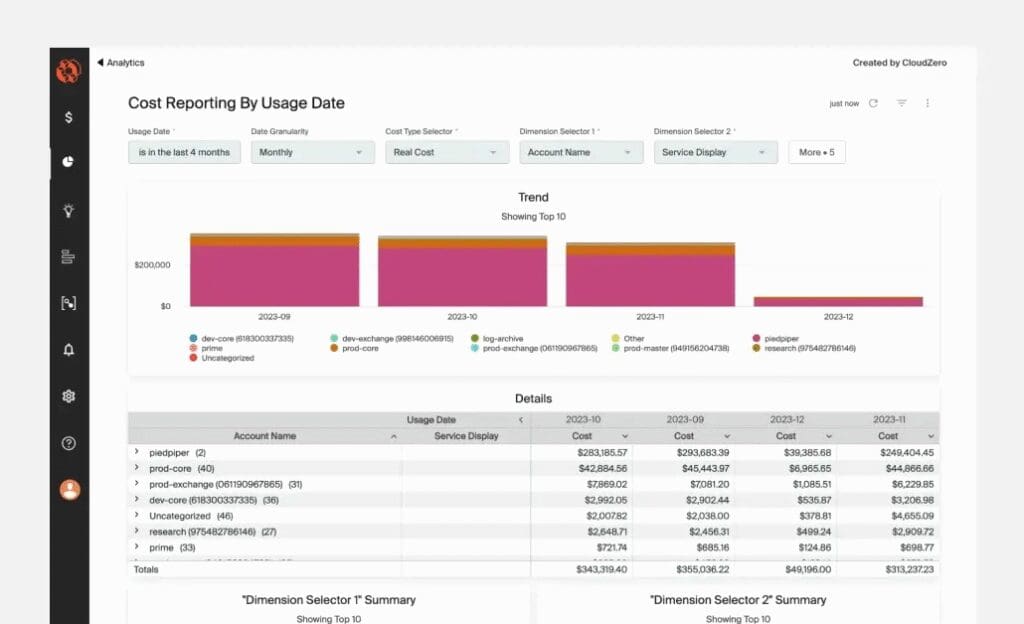
5. OpenCost
OpenCost is an open-source platform that offers cost monitoring for Kubernetes, providing transparency into cluster spending without vendor lock-in.
Capabilities include:
- Open Source: Community-driven development and transparent pricing
- Real-time Monitoring: Continuous cost tracking and reporting
- Flexible Deployment: Can be deployed on-premises or in the cloud
- Extensible Architecture: Customizable for specific organizational needs
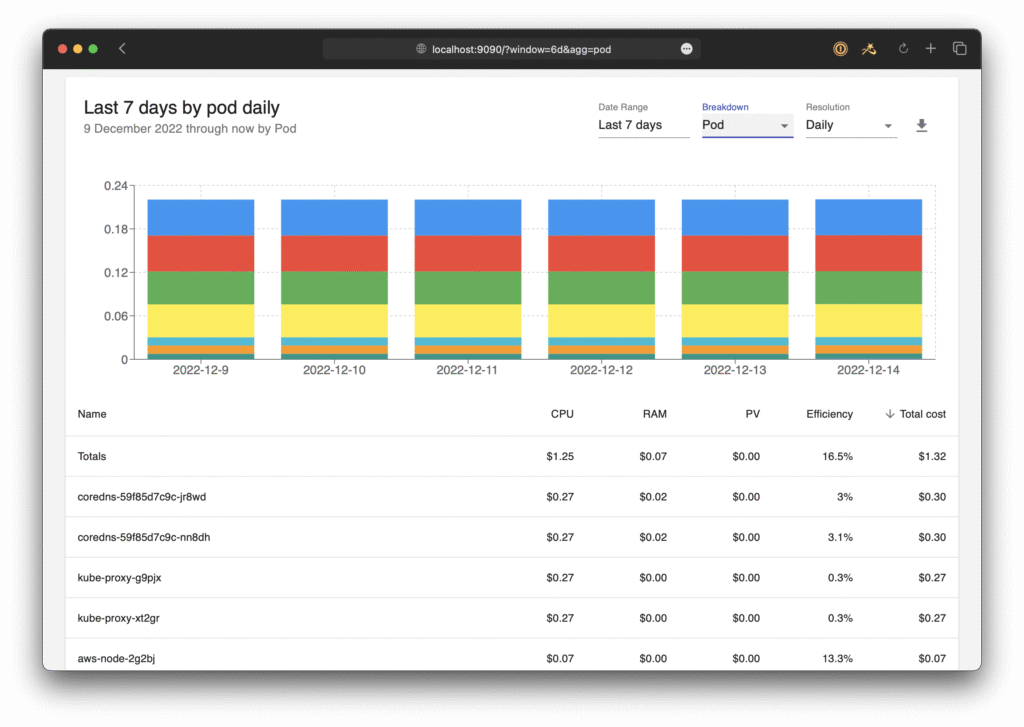
6. StormForge
StormForge is a commercial platform that combines performance testing with cost optimization, ensuring applications maintain performance while reducing resource consumption.
Features:
- Performance Testing: Validate application performance under different resource constraints
- Machine Learning Optimization: AI-driven resource recommendations
- CI/CD Integration: Embed optimization into development workflows
- Multi-metric Optimization: Balance cost, performance, and reliability

7. Sedai
Sedai is a commercial platform that provides autonomous cloud management with specific focus on Kubernetes cost optimization through intelligent automation.
Core capabilities:
- Autonomous Management: Self-managing optimization without human intervention
- Multi-cloud Support: Works across different cloud providers
- Safety Mechanisms: Built-in safeguards to prevent optimization-related issues
- Performance Monitoring: Ensures optimization doesn’t negatively impact applications

8. Spot
Spot (formerly Spot.io) is a commercial platform that offers cloud cost optimization with strong Kubernetes integration, focusing on infrastructure efficiency and cost reduction.
Key features:
- Spot Instance Management: Optimize use of spot instances for cost savings
- Predictive Analytics: Forecast future resource needs and costs
- Automated Scaling: Intelligent scaling based on actual demand
- Multi-cloud Optimization: Cost optimization across multiple cloud providers
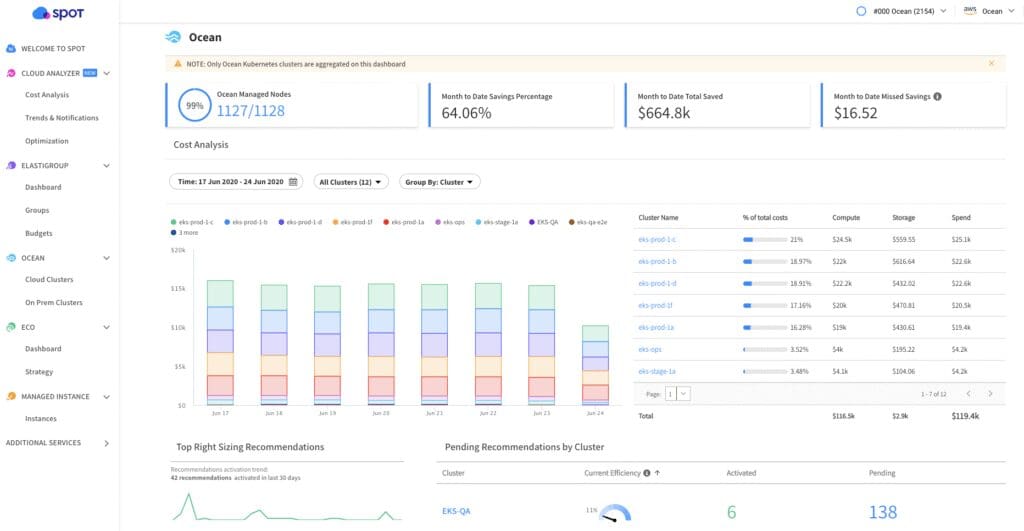
Key Features of Kubernetes Cost Optimization Solutions
Most “cost optimization” advice starts and ends with a dashboard. But real savings happen when platforms actually manage resources, not just report on them.
Intelligent, Usage-Based Resource Management
The most effective solutions analyze and understand how your applications behave over time, combining real-time and historical data to make context-aware resource management decisions. For teams dealing with dozens (or thousands) of services, this kind of insight isn’t just helpful, it’s foundational. It removes guesswork from CI/CD pipelines, eliminates the need for developer-side tuning, and lays the groundwork for reliable, automated scaling.
Resource Rightsizing and Autoscaling
The best platforms don’t just suggest changes, they manage them. By continuously managing pod-level requests and limits based on real demand, they eliminate over-provisioning without risking performance. This kind of automation works across all workload types and scaling strategies, making it possible to run production at scale without constant tuning or manual intervention.
Cost Allocation and Granular Visibility
Effective cost optimization requires understanding where money is being spent. Leading solutions provide detailed cost breakdowns by:
- Namespace and Label: Track spending by team, project, or application
- Workload Type: Differentiate between production, staging, and development costs
- Time-based Analysis: Identify cost trends and seasonal patterns
- Resource Type: Separate compute, storage, and network expenses
This granular visibility enables accurate chargeback and showback models. This lets teams understand which applications, teams, or environments are driving usage, enabling accurate chargebacks, better budget planning, and data-driven resource decisions.
Proactive Anomaly Detection and Forecasting
Proactive cost optimization requires identifying unusual spending patterns before they impact budgets. Modern solutions use machine learning algorithms to detect:
- Unexpected Resource Spikes: Identify when applications are consuming more resources than normal
- Cost Trend Analysis: Predict future spending based on current usage patterns
- Budget Variance Detection: Alert when actual costs deviate from projected budgets
Storage and Network Efficiency
CPU and memory aren’t the whole story. Comprehensive solutions address storage and network costs through:
- Persistent Volume Optimization: Identify unused or oversized storage allocations
- Network Traffic Analysis: Monitor data transfer costs and optimize service mesh configurations
- Multi-cloud Cost Comparison: Compare costs across different cloud providers and regions
Understanding the full scope of Kubernetes pricing helps teams make informed decisions about resource allocation and cloud provider selection.
Choosing the Right Kubernetes Cost Optimization Solution
The best solution depends on how you run Kubernetes.
If you work in a regulated industry, you probably need a self-hosted option. If you run a lot of clusters or critical workloads, you need something that automates resource management without breaking things.
Some platforms only show you dashboards. That’s not enough. Real Kubernetes cost optimization means managing CPU, memory, and replicas automatically, based on how your apps actually behave. It means no more guessing, no more overprovisioning, and no manual tuning for every deployment.
You should also look for a platform that fits into how you already work. If you’re using autoscalers like HPA, KEDA, or Karpenter, make sure the solution can work alongside them. And if your developers are too busy to worry about resources, find a platform that takes that off their plate, without any code changes required.
The right solution will save money without adding more work.
ScaleOps does exactly that. It’s a self-hosted platform built for production, with automated, application context-aware resource management that cuts Kubernetes and cloyd costs by up to 80%, without performance risk or manual tuning.
The Future of Kubernetes Cost Optimization
Kubernetes cost optimization is moving past monitoring. It’s becoming part of how infrastructure runs day to day.
Instead of just showing where money goes, new platforms manage resources automatically. They adjust in real time, based on what’s actually happening in the cluster. That means better efficiency—and fewer surprises.
More teams are also looking for smarter ways to use Spot instances without risking uptime. Others want to manage storage and network costs, not just CPU and memory. And many want a solution that works in CI/CD, not just after something is deployed.
The goal is simple: cut waste, keep workloads reliable, and make cost optimization automatic.




